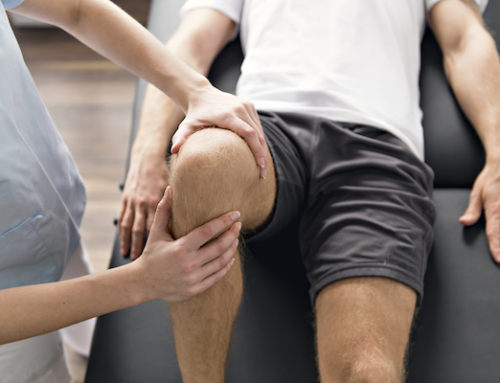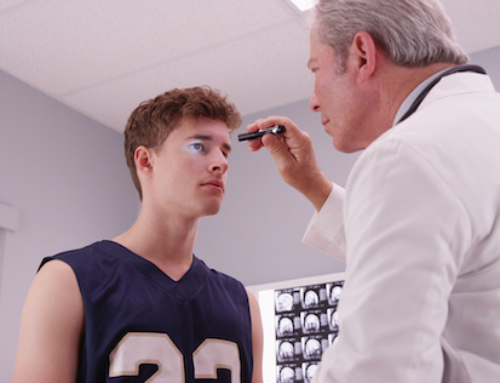Soccer is one of the world’s most popular and well-loved participation sports. The sport involves a number of intense movements, including speeding up, slowing down, jumping, weaving, turning, heading, and striking the ball. Soccer places many physical demands on the player, and as a result, injuries are quite common. To help keep you on the field, read on for some helpful tips on how you can avoid severe soccer injuries.
Common Lower Extremity Soccer Injuries
The most common lower extremity injuries to the knee are sprains and strains. The severity of these injuries can vary, with more intense sprains and strains resulting in fractures or contusions. Stress fractures occur when a bone becomes weak from overuse. It is often difficult to distinguish a stress fractures from a soft tissue injury. Soreness in the calf (shin splints), pain in the knee (patellar tendinitis), and pain in the back of the ankle (Achilles tendinitis) are some of the more common soccer overuse conditions. Soccer players are also prone to groin pulls and thigh and calf muscle strains. Certain common injuries can have a lasting impact if not treated properly, so injuries like cartilage tears and anterior cruciate ligament (ACL) sprains may require surgery.
Common Upper Extremity Soccer Injuries
Injuries to the upper extremities experienced by soccer players usually occur from falling on an outstretched arm or from player-to-player contact. These conditions include wrist sprains, wrist fractures, and shoulder dislocations. If pain develops in any part of your upper torso and does not improve after a few days of rest, consult a physician to determine whether a stress fracture is present.
Avoiding Soccer Injuries
As a high-speed endurance sport, collisions in soccer are inevitable. The following tips can help reduce your chances of injury.
- Use well-fitting cleats and shin guards. Molded and multi-studded cleats are proven to be safer than screw-in cleats.
- Pay attention to environmental recommendations, especially in relation to excessively hot and humid weather. Waiting until you are thirsty to grab your water bottle is often too late to hydrate properly, so stay in top shape by drinking water regularly and avoiding dehydration.
- Maintain a proper fitness routine so that your body is more equipped to handle an injury.
- Visit your doctor for a pre-season physical to ensure that you are ready for the season and to address any past injuries.
Prepare for Injuries
It is impossible to prevent every injury, but you can greatly reduce your chances of severe injury by being prepared for anything that could happen on the field. If your team regularly plays on artificial grass fields, be sure to adequately clean any skin scrapes or abrasions to reduce the chance of infection. Coaches should be knowledgeable about first aid and be able to administer it for minor injuries such as cuts, bruises. More significant injuries should be left to the professionals such as ATC’s or MD’s. If your team or club has access to a Certified Athletic Trainer (ATC), utilize them for initial treatments and diagnosis.
Treatment for Soccer Injuries
Most overuse injuries can be treated with a short period of rest, meaning that the athlete can continue to perform or practice modified activities. However, in many cases, pushing through the pain will only cause further harm. For injuries such as stress fractures, knee ligament injuries, or any injury to the head or neck, this is especially true, and you should follow your medical professionals instructions exactly. Contact your doctor for proper diagnosis and treatment of any injury that does not improve after a few days of rest.
If you or a teammate is injured, participation in practices and games should be stopped until the injury is evaluated and treated properly. If a trained healthcare professional (such as a sports medicine physician or athletic trainer) is available to evaluate an injury, a decision about next steps for care can often be made immediately. In the case of severe injuries, including head injuries or concussions, medical attention will be needed before returning to the field.
Sports Injury Relief and Treatment in Illinois
As with any sport, accidents happen and injuries can occur. To minimize your recovery time and to make sure you are healing properly, contact Dr. Roger Chams, M.D. for an experienced opinion and comprehensive care. Dr. Chams is a board-certified orthopedic surgeon who specializes in conditions of the knees and shoulders. He is prepared with the necessary knowledge and experience to get you on the path to the smoothest recovery. Contact us today to schedule an appointment at one of our office locations and let our dedicated staff help get you back on the soccer field!






